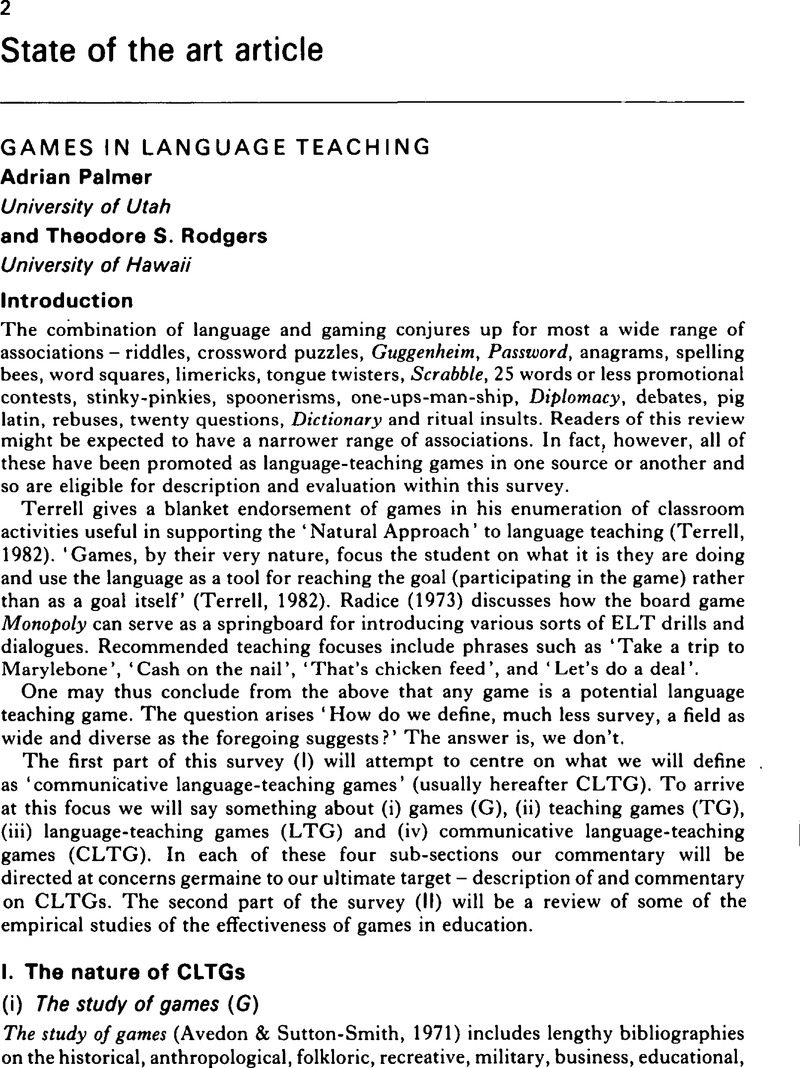Crossref Citations
This article has been cited by the following publications. This list is generated based on data provided by Crossref.
1985.
Resources.
System,
Vol. 13,
Issue. 3,
p.
279.
Herok, Thomas
1986.
Kommunikation and Spracherwerb im Fremdsprachenunterricht. untersuchungen zu einer spracherwerbstheoretischen Fundierung vor allem des schulischen Fremdsprachenunterrichts.
Journal of Pragmatics,
Vol. 10,
Issue. 4,
p.
491.
Nuessel, Frank
2012.
Marcel Danesi and Semiotics.
The American Journal of Semiotics,
Vol. 28,
Issue. 1,
p.
19.
Pinter, Annamaria
2019.
Agency and technology-mediated task repetition with young learners.
Language Teaching for Young Learners,
Vol. 1,
Issue. 2,
p.
139.
deHaan, Jonathan
2020.
Game-based language teaching is vaporware (Part 2 of 2): It’s time to ship or shut down.
Ludic Language Pedagogy,
Vol. 2,
Issue. ,
p.
140.
Nuessel, Frank
2020.
Mathematics (Education) in the Information Age.
p.
73.
York, James
2020.
It’s your mooooove: Why teaching with games should be like vaporwave (and not nightcore).
Ludic Language Pedagogy,
Vol. 2,
Issue. ,
p.
104.
York, James
2020.
How to teach languages with “Among Us”.
Ludic Language Pedagogy,
Vol. 2,
Issue. ,
p.
269.
York, James
Poole, Frederick J.
and
deHaan, Jonathan W.
2021.
Playing a new game—An argument for a teacher‐focused field around games and play in language education.
Foreign Language Annals,
Vol. 54,
Issue. 4,
p.
1164.
Antequera-Barroso, Juan Antonio
and
Carmona-Medeiro, Enrique
2024.
Connect the dots: connecting problem solving and videogames in initial training of early childhood education teachers.
Frontiers in Education,
Vol. 9,
Issue. ,





